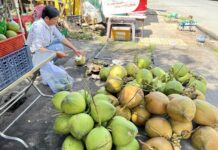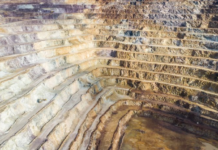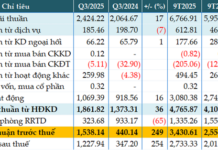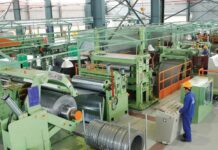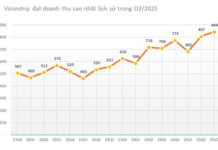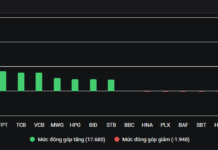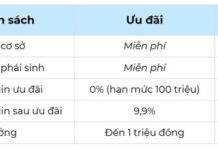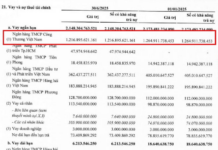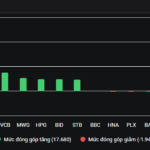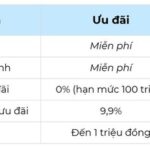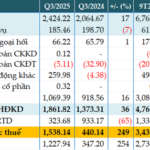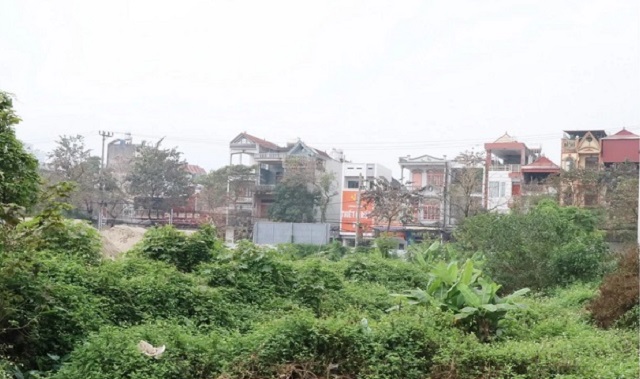
|
Illustrative image. (Source: VNA)
|
According to the Ha Noi People’s Committee, from May 22 to December 31, 2024, the municipal People’s Committee authorizes the district-level People’s Committees to decide on land prices as a basis for compensation payment when the State retrieves land, and for land use fee collection when allocating resettlement land.
The district-level People’s Committees are also authorized to decide on the starting price for land use right auction for land allocation or lease with payment for land use right to households and individuals; and decide on the starting price for land use right auction when the State allocates or leases land in cases where the land lot or land area has been invested with technical infrastructure in line with detailed construction planning.
The district-level People’s Committees must be responsible for their assigned tasks and powers before the Ha Noi People’s Committee.
If any difficulties or problems arise during the implementation or if there are matters beyond their competence, they must promptly report and propose solutions to the city (through the Ha Noi Department of Natural Resources and Environment) for consideration and direction.
Notably, the district-level People’s Committees are responsible for completing the Council for Land Price Appraisal and other relevant contents (if any), and directing the district-level departments of Finance and Planning, and other relevant units to implement this task.
At the same time, they must ensure financial conditions, human resources, and other necessary conditions to perform the assigned tasks; and report the results of the authorization to the Ha Noi People’s Committee (through the Department of Natural Resources and Environment) periodically (every three months) or occasionally as requested by the superior authority or competent agency.
In addition, district-level People’s Committees are responsible for coordinating in determining specific land prices for projects implemented in many districts and projects at adjacent locations.
The Ha Noi Department of Natural Resources and Environment is responsible for coordinating with the Department of Finance, the Department of Justice, and relevant units to guide district-level People’s Committees on procedures and processes and to deploy the implementation of the authorized contents in accordance with legal regulations.
Before December 10, 2024, the Department of Natural Resources and Environment, together with other departments, sectors, and district-level People’s Committees, will organize a summing-up conference to evaluate the results of the authorization and report to the Ha Noi People’s Committee for consideration of continuing the authorization as a basis for organizing the implementation in the next period.
The Department of Finance is responsible for coordinating with the Department of Natural Resources and Environment to guide district-level People’s Committees on the application of land price adjustment coefficients to determine the starting price for land use right auction; synthesize and review the contents related to land price adjustment coefficients, and report and propose to the Ha Noi People’s Committee for consideration and direction.
For the dossiers that are being processed by the Ha Noi Department of Natural Resources and Environment before May 22, 2024, if they have been submitted to the Ha Noi People’s Committee for decision on specific land prices, they will continue to be implemented. Otherwise, the dossiers will be transferred to the district-level People’s Committees for organization of implementation according to regulations.
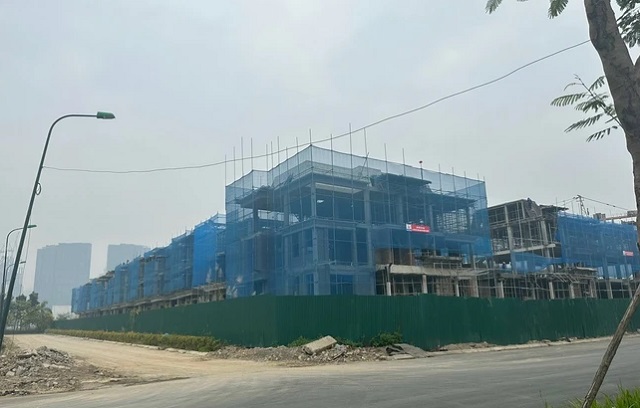
|
Illustrative image. (Photo: Minh Nghia/VNA)
|
According to the Ha Noi People’s Committee, the city has just announced a list of 36 investment attraction projects in the first phase of 2024, including fields such as infrastructure, transportation, wastewater and waste treatment, urban areas, shopping malls, wholesale markets, hotels, and amusement parks.
The Ha Noi People’s Committee assigned the Department of Planning and Investment, the Management Board of Industrial Parks and Processing Zones, and the Hoa Lac Hi-tech Park Management Board to propose and carry out procedures in accordance with legal regulations related to the organization of appraisal and approval of investment policies, and the selection of investors.
The Department of Planning and Investment is responsible for updating the implementation progress, reviewing and proposing adjustments and supplements to the list of investment attraction projects, and deploying tasks related to the establishment of a working group to promote domestic and foreign investment attraction for key projects.
According to the Department of Planning and Investment, among the 36 investment attraction projects in this first phase, there are 16 projects to build new urban areas and social housing with a total investment of about VND117.33 trillion, to be implemented from now until 2033.
There are seven projects in Dong Anh district (including four new urban areas and three social housing projects). The four new urban areas are G3 (Kim Chung and Dai Mach communes) with a scale of 79.9 hectares, G13 (Mai Lam and Dong Hoi communes) with a scale of 44.2 hectares, G8 (Kim No and Kim Chung communes) with a scale of 46.6 hectares, and G17 (Nam Hong commune) with a scale of 20.6 hectares.
The three social housing projects are Star City Tien Duong (in Tien Duong commune) with a scale of 44.72 hectares, Greenlink City with a scale of 39.5 hectares, and Green Home City (in Dai Mach and Tien Phong communes) with a scale of 81 hectares.
There are three projects in Thanh Tri district, including the new urban area of Lien Ninh commune with a scale of 30.1 hectares, the C3-1 urban area in Dai Ang commune with a scale of 27.4 hectares, and the Huu Hoa new urban area with a scale of 137.7 hectares.
There are also two projects in Me Linh district, including the Me Linh new urban area and the Dai Thinh new urban area, with scales of 40.6 hectares and 33.4 hectares, respectively.
In Dan Phuong district, there are two projects, including the Thuong Cat functional urban area (nearly 139 hectares) and the Dan Phuong new urban area (128 hectares). In Gia Lam district, there is one social housing project, Green Innovation City, with a scale of 38.22 hectares. In Bac Tu Liem district, there is one social housing project with a scale of 3.04 hectares.
In this phase, Ha Noi is also calling for investment in a five-star hotel project (at 18 Cao Ba Quat street) with an area of 3,366 square meters and an expected investment of VND414 billion, and an amusement park project on an area of 142 hectares in Long Bien district.
Ha Noi is also continuing to call on investors to pour investment into the Hoa Lac Hi-tech Park.
Recently, the Ha Noi People’s Committee also decided to supplement the land use planning for eight projects with a total area of 5.0117 hectares (Document No. 1995 signed on April 15, 2024).
Notably, among them are projects to build primary and kindergarten schools on TH3 and NT3 land plots in the Linh Dam総合サービス area.
The land plot for school construction has an area of 1.084 hectares in Hoang Liet ward (Hoang Mai district), and is expected to be implemented in the first quarter of 2026.
In Thanh Xuan district, the Ha Noi People’s Committee also adjusted the function of a 1.26-hectare land plot to build a school in Khuong Dinh ward (Document No. 2480 dated May 9, 2024 on the approval of the adjustment of a part of the H2-3 urban planning at a ratio of 1/2000 in land plot C2-CQ2 in Khuong Dinh ward).
The adjustment aims to create a basis for researching and formulating a master plan and investment project for the “Improvement of Khuong Ha primary, secondary, and high schools”, and for the city’s authorities to manage investment and construction in accordance with legal regulations.
The city requires that the architectural and landscape space of the school land plot must be harmonious with the general landscape of the area, suitable for its nature and purpose, meeting the requirements for improving the quality of the educational environment, and developing a system of high-quality schools with synchronous, standardized, advanced, and modern facilities and infrastructure.
Linh Khanh


